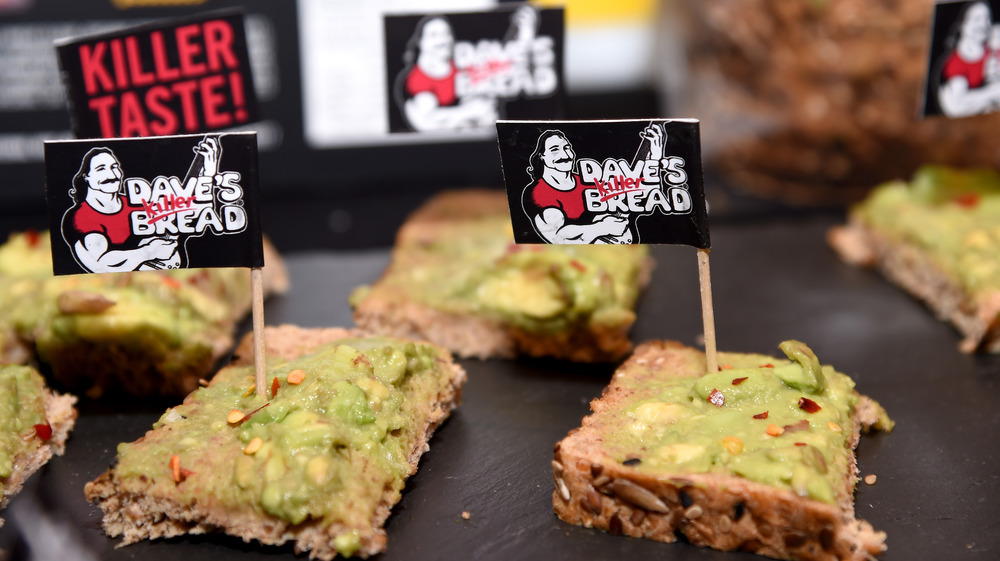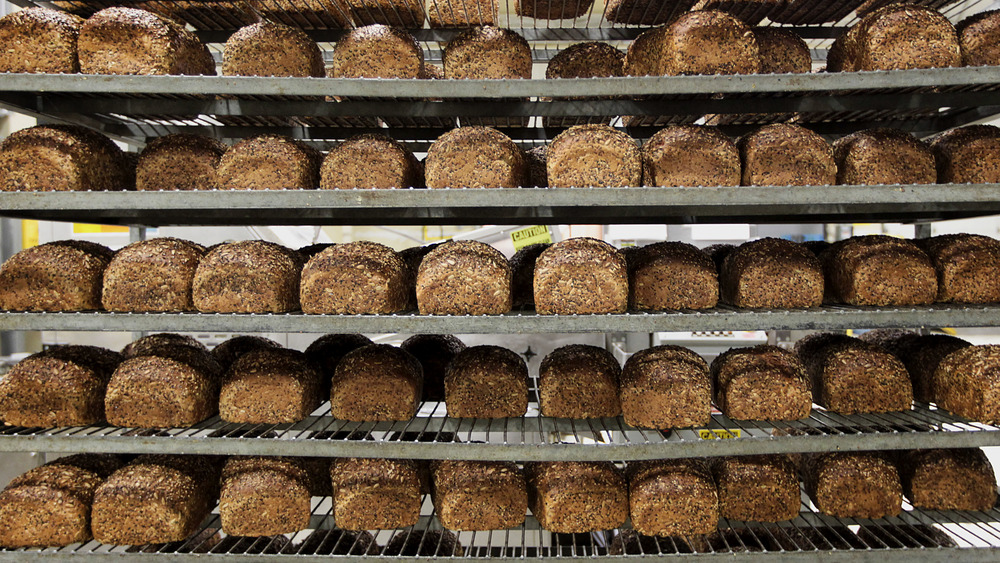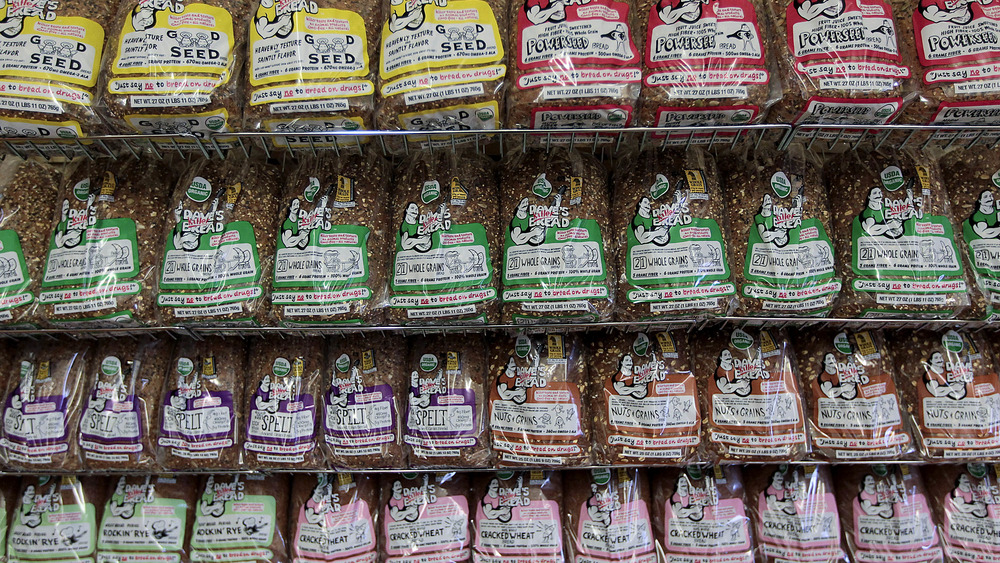Is Dave's Killer Bread Actually Healthy?
Since the company's inception in 2005, Dave's Killer Bread has served hearty loaves of bread that have appealed to health-conscious consumers. That's not just because of the bread's organic and non-GMO ingredients, but also because such ingredients allow the product to be far richer in nutrients than standard breads, all without sacrificing flavor (Eat This, Not That). And while the original "killer breads," such as Good Seed and Rockin' Rye continue to be a popular selection amongst shoppers (via The Ringer), Dave's Killer Bread has evolved from offering just power-packed loaves to crafting other breads, including sprouted breads, bagels, and English muffins.
But, with the knowledge that bread can be considered an unhealthy food item because of its low essential-nutrient profile and high levels of calories and carbs, as explained by Healthline, some consumers may be wary of Dave's Killer Bread. Wondering just how healthy each loaf really can really be? We have the answers.
The good, the bad, and the ugly
According to Eat This, Not That, just one slice of the Dave's 21 Whole Grains and Seeds Killer loaf offers a generous-for-bread five grams of protein and an equal amount of dietary fiber, which totals around 17 percent of the Recommended Daily Intake (RDI). This is generous, as some standard sliced breads offer as little as one gram of fiber per slice.
Despite these nutritional benefits, Dave's Killer Bread has quite a lot of sugar packed into each slice. According to Business Insider, eating two slices of the Raisin' the Roof Killer Bread variety surpasses the amount of sugar packed within a fun-sized caramel candy bar, offsetting the benefits of being rich in nutrients like omega-3s — especially for those who don't want to see a spike in their sugar levels after a meal.
It's natural for sugar to form in bread during the baking process, but it's also not uncommon for additional sugars to be thrown into the mix as well ( via the BBC). High-sugar diets can negatively impact one's health, according to Stack, putting consumers at a greater risk for developing obesity, type 2 diabetes, heart disease, and some cancers. Ingesting a surplus of sugar can also accelerate tooth decay. The maximum amount of recommended added sugar per day caps off at 25 grams for women and 36 grams for men.
What do nutritionists think?
Despite the seemingly high amounts of sugar found in a slice of Dave's Killer Bread, many of the less-nutritious bread options boast around the same amount of sugar per slice. So, "if you are going to consume bread regardless, you are better off choosing bread with five grams of protein and five grams of fiber than bread with zero to one gram of fiber with the same amount of sugar added," advised registered dietitian Brittany Modell when giving her expert opinion to Eat This, Not That.
So, when it comes to how much sugar to look out for when purchasing a loaf of bread, registered dietitian nutritionist Charlotte Martin explained to Eat This, Not That that "a 'healthy' bread should have no more than a couple of grams of added sugar per slice."
If you're looking for a Dave's Killer Loaf that meets the nutritionist's sugar-per-slice recommendations, try Dave's Thin-Sliced Good Seed, Thin-Sliced White Bread Done Right, Thin-Sliced Powerseed, or Thin-Sliced 100 Percent Whole Wheat bread, which all contain two grams of sugar per slice (Dave's Killer Bread).


